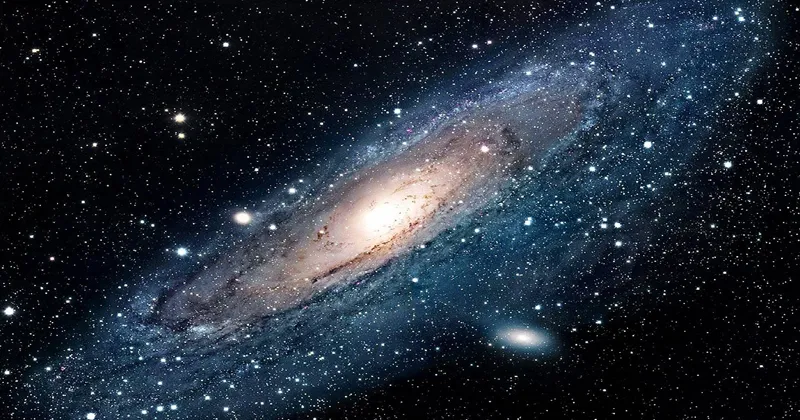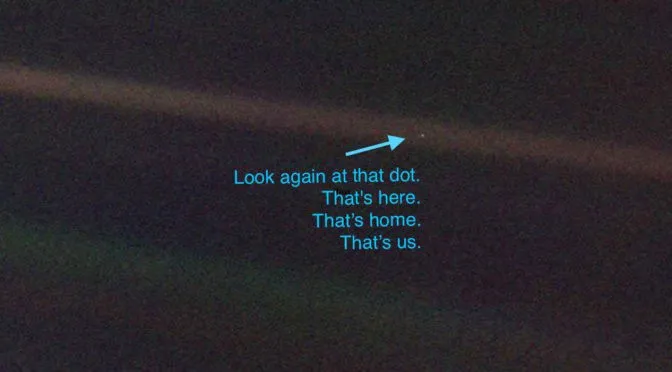
Fingers feel stiff when pressing keyboard keys to write word for word. Writing routinely cannot become my habit at this time, even though my will in my heart is already on fire, it seems that laziness can still block this desire. It can be concluded that the will to write a routine in this self is not strong enough. However, at least once a week I have to write.
This paper will tell a lesson on humility that is learned from astronomy. A science that studies the universe, which is constantly trying to be able to understand the universe which is very, very wide and even until now has not been fully explored.
Almost all scientists today agree that the universe formed about 12 billion years ago through a big bang. From a small point until finally it extends to infinity at this time. Infinite does not mean literally, it's just that human knowledge is not currently able to know the boundaries of the universe. The universe is constantly expanding. It is not yet known what causes the universe to continue to expand.
All space objects in the Milky Way galaxy revolve around the sun. The Milky Way galaxy is also moving in circles that are not yet known to humans. To me, these scientists are humble enough to admit what they don't know. However, ignorance is not something that stops them from looking into it. In science, ignorance must be known.
The goal of science is for the benefit of humans. If there is the knowledge that is used for personal or group interests and harms other humans, then people who use that knowledge have betrayed the aims of science. Many people today think that science has grown up and become arrogant. Science is considered to be the culprit for the decline in the percentage of followers of religion. It is because of this that many people today are hostile to science.
Science is considered to be devoid of morality, so they dare to underestimate religion which contains thick morality. Science is humiliated because it dares to break religious teachings. For example, science rejects the theory of creation as taught by religion with the theory of evolution. Will be a separate article to explain this. Perhaps there have been many writings contradicting this matter and no less numerous writings trying to unify this contradiction as I have written before.
Science is not hostile to religion. Science is not talking about abstract things, they are only talking about something that can be proven empirically. Those who are hostile are fanatical adherents who act in the name of religion to harm other human beings. For me, this kind of attitude tarnishes religion which contains moral values. After reading scientists who were considered hostile to religion such as Carl Sagan, Richard Dawkins, and Stephen Hawking, I concluded that they were not people who were hostile to religion. Just like Karl Marx, they only regret the attitude of religious fanatics who dwarf humanity.
Back to astronomy. In 1977, NASA launched an unmanned spacecraft named Voyagers 1. This unmanned spacecraft is still operating in outer space. Voyagers 1 is a man-made object that is farthest from the earth, as of August 1 2015 this object is 19.7 billion km from the earth. Imagine, the sun is very far away only 149,600,000 km. Yes, this thing is very far away at this time. Voyagers 1 moving at a speed of 72 thousand km/hour.
Carl Sagan was a member of the Voyagers imaging team and it was from his idea that Voyagers 1 took pictures of the Earth after passing through Neptune in 1990 after 13 years of leaving Earth. He convinced NASA to turn the camera towards the earth for the last time home (Earth) at what he called "The Pale Blue Dot". Earth's distance to Neptune is around 4,351,400,000 km.

Image of Earth from a distance of 4,351,400,000 km
The other dots are the planets and stars in the universe. In this image, there may be millions of planets and stars that only look like dust particles. And Earth, where we live is just one of the millions of others.
Here's a reflection from >Carl Sagan after seeing a portrait of the Earth from such a distance.Image of Earth from a distance of 4,351,400,000 km.
"Here. That's our home. That's us. On it, everyone you love, everyone you know, everyone you have heard of, every human being who has ever lived their life. All our joys and sufferings, thousands of religions, ideologies and economic doctrines. Every hunter and seeker, every hero and coward, every creator and destroyer of civilization, every king and commoner, every young couple in love, every mother and father, every hopeful child, inventor and explorer, every moral teacher, every politician the corrupt, every superstar, every supreme leader, every saint and sinner in the history of our species, lives there… On a speck of dust hanging from the sun.
Earth is a very small stage in a vast cosmic arena. Think of the river of blood that the generals and emperors shed, so that in their glory and triumph they could become momentary rulers of a fraction… from a point. Think of the endless cruelty that the inhabitants of one corner of this pixel commit to other inhabitants who cannot be distinguished from another corner. How often they misunderstand, How eager they are to kill each other, how strong is their hatred of our mental attitudes, our self-importance, the delusion that we have a privileged position in the universe, are challenged by that pale point of light. Our planet is a lonely spot in the cosmic darkness that envelops it ...
In our obscurity, in all this vastness, no helpful hint will come from elsewhere to save us from ourselves. Earth is the only world known so far that supports life. Nowhere else, at least in the near future, will our species migrate. Visiting, can. Settled, not necessarily. Like it or not, for now, Earth is where we stand. It is said that astronomy is a humbling, character-building experience through experience. There is perhaps no better demonstration of human stupidity and arrogance than this image from afar. To me, this emphasizes our responsibility to better relate to one another, as well as to preserve and appreciate the pale blue dot, the only home we know of. "
To me, Carl Sagan groan was touching. How is it possible for us living beings who live in a tiny piece of dust in this universe to have the height of the heart? Isn't it by seeing such greatness that we feel small and begin to grow the awareness that egoism means nothing in such an enormous universe? Is it still worth pride to exist in super-tiny creatures like us?
This article is fully inspired by the Cosmos a Spacetime Oddysey series by Neil deGrasse Tyson, a renowned astrophysicist. For readers who have never seen the film, it is highly recommended to watch it because for me it is enlightening. It only takes a slightly open mind to be able to absorb the content of the film. This article also contains many mistake, so please understand.
I have posted this article before on my readcash account
https://read.cash/@dark_spirit666/the-pale-blue-dot-29855e72
